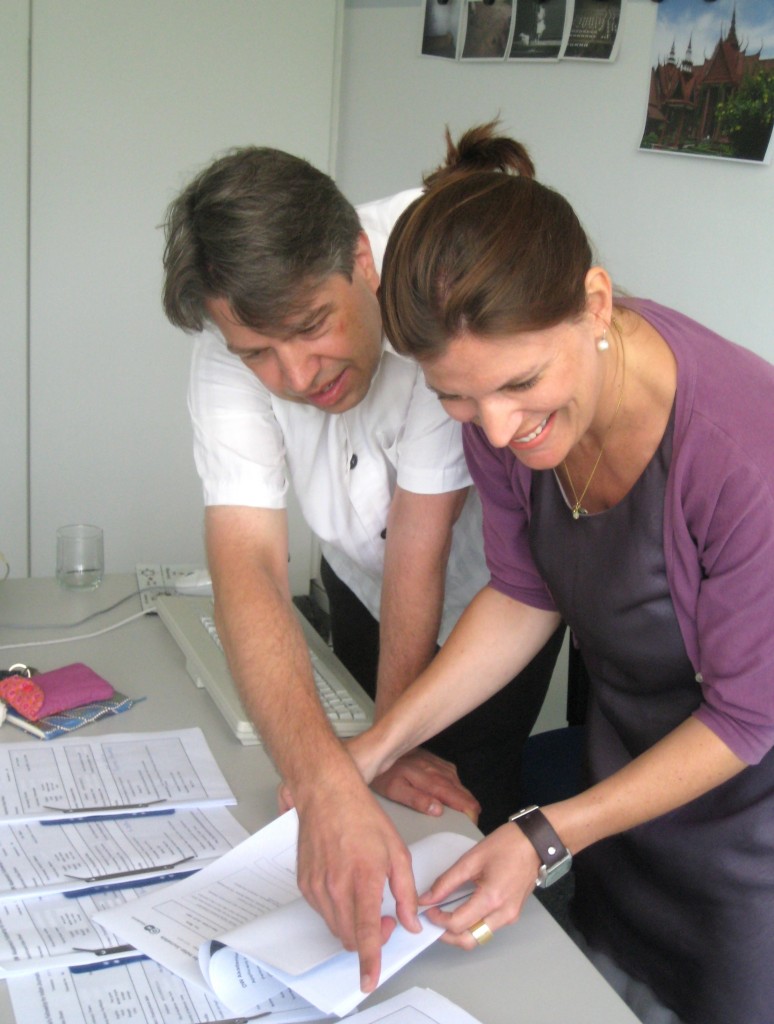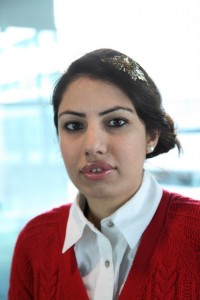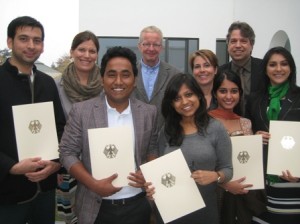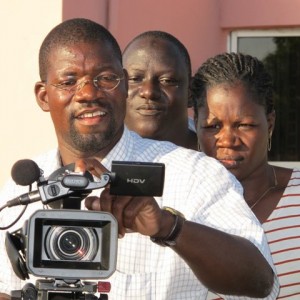Search Results for Tag: multimedia
DW fellows see sustainable value in project
Six Indian journalists have taken stock of their seven-week fellowship at DW Akademie in Bonn. The Meeting and Exchange Project Grow.Green.India, financed by the Robert Bosch Stiftung, not only changed their image of Germany, but also provided them with new inspiration and ideas: for their country, for their journalistic work and – not least – for their own contributions for a “sustainable” future of our planet. Click on the pictures to see the videos.

![]() read more
read more
Make journalism training multiskilled
 Digital technologies are completely changing the face of journalism. This transformation presents new challenges for training journalists because it’s no longer practicable for upcoming reporters to only have skills in a single medium.
Digital technologies are completely changing the face of journalism. This transformation presents new challenges for training journalists because it’s no longer practicable for upcoming reporters to only have skills in a single medium.
Instead, during their training, journalists need to be exposed to diverse narrative forms and modes of representation used in all media, from radio and television to print and online.
![]() read more
read more
Indian fellowship program concludes in Bonn
The multimedia site “grow.green.india” is the productive result of the Meeting and Exchange Project for Indian Journalists, which has just wrapped up in Bonn. For seven weeks, six journalists from across India enjoyed intense training in multimedia journalism and had ample opportunity to produce their own reports for the site.
![]() read more
read more
Understanding your target audience
By Bettina Ruigies
Today’s fast moving media environment requires a lot of flexibility from media workers. Multimedia skills are a must. Journalists need to be able to produce stories for radio or television, print or online. At the same time, digitization, the Internet and affordable equipment enables anyone who wishes to open a TV station on YouTube or at least run a blog site.
All this technical innovation offers tempting perspectives for hard working and talented journalists. But frustration and failure might set in when it turns out that hardly anybody is watching or reading.
![]() read more
read more
Journalists@Work: Rajneesh Bhandari
In the first of our Journalists@Work series, we talked to Rajneesh Bhandari, a multimedia journalist in Kathmandu, Nepal. Rajneesh participated in DW Akademie’s television reporting training held in Kathmandu in 2009 in cooperation with the Television Journalist Association of Nepal (TVJ). Rajneesh, who works at Kantipur Television, gives us some insight into his everyday life as a journalist in Nepal.
![]() read more
read more
Six Indian fellows bound for Germany
DW Akademie together with Germany’s Robert Bosch Stiftung has wrapped up the selection process for its Meeting and Exchange Project for Indian Journalists . Almost 150 journalists from all across India applied for this project.

Applications are under review by project manager Patrick Benning (left) and head of DW-AKADEMIE's Asia division Dr. Andrea Rübenacker
The call for applications to the fellowship was launched online. The reaction to it by far exceeded all expectations. “We were extremely impressed by the high number of talented and qualified journalists applying,” says project manager Sabina Casagrande who spent two weeks evaluating the applications together with her colleague Patrick Benning. Both project managers admit they would have loved to invite more journalists to participate. “It was heartbreaking to have to reject so many promising candidates,” they say. However, six fellows between the ages of 25 – 35 will be heading to Germany in September for one-and-a-half months of journalistic and intercultural training. They will also be putting together a multimedia project on the topic of sustainability. Here’s a quick peek at the participants:
![]() read more
read more
How to correct shifting lines in photographs
If you take photographs, you’ve probably encountered this situation: You’re trying to photograph a building or a group of buildings, but you can’t move back any further. So in order to get the whole structure into the picture, you use a wide angle. In the resulting frame, the houses look like they’re about to fall over. This phenomenon is caused by a distortion of perspective brought about by the wide angle lens, the so-called shifting or converging lines. In many cases, a free software called ShiftN can help. It automatically corrects shifting vertical lines and turns them into straight verticals.
The video below shows you what this software can do.
This is how the programmers describe this free software: “ShiftN permits correction of converging lines; a majority of the correction work is taken over automatically by the program. Using the ‘automatic correction’ item in the menu is in most cases sufficient to produce a satisfying result. Both the effects of converging lines and poor camera angle are corrected automatically.”
It works, but it doesn’t work wonders
If you use ShiftN to correct converging lines, be careful not to overdo it.  Seeing only straight verticals instead of shifting lines doesn’t look natural. Your photos will seem awkward and unnatural.
Seeing only straight verticals instead of shifting lines doesn’t look natural. Your photos will seem awkward and unnatural.
ShiftN is great if the distortion is only minor, as seen in the example video. But a case like those white high rises you see at the top of this page is too much for ShiftN’s automatic correction.
As you see on the right, the way ShiftN “corrected” this picture looks artificial. The manipulation is obvious and makes the viewer uncomfortable.
In some cases, you’ve just got to take another step back to get the perfect picture – or be prepared to live with converging lines.
By Thorsten Karg
Edit photos online with PicMonkey
 When Google closed its popular Picnik online photo editing service earlier this year, there must have been a collective internet cry of “No!”. For journalist trainees Picnik was a great way of introducing the basics of photo editing, and it was available in several languages. So, what can fill the gap? Enter PicMonkey. Oh and by the way, it’s easy to use and it’s free.
When Google closed its popular Picnik online photo editing service earlier this year, there must have been a collective internet cry of “No!”. For journalist trainees Picnik was a great way of introducing the basics of photo editing, and it was available in several languages. So, what can fill the gap? Enter PicMonkey. Oh and by the way, it’s easy to use and it’s free.
![]() read more
read more
Research and production plan for multimedia stories
Imagine you are just finishing a story or blog post and suddenly realize that some crucial piece of information is missing.
Or maybe you only notice now that you forgot to take a picture of one of the people you interviewed.
Something is missing that you should have arranged to get early in the research process that you can no longer get at this late hour.
We’ve probably all experienced such nightmares. Yet they are so easy to avoid with a little bit of careful planning.
![]() read more
read more
Turning attention to women’s rights in South Asia
 Spotlighting women’s issues in South Asia is the focus of a recently introduced multimedia project at Deutsche Welle. Three young female journalists from Pakistan, Afghanistan and India were sponsored by the Friedrich Ebert Foundation to help launch the undertaking in Bonn.
Spotlighting women’s issues in South Asia is the focus of a recently introduced multimedia project at Deutsche Welle. Three young female journalists from Pakistan, Afghanistan and India were sponsored by the Friedrich Ebert Foundation to help launch the undertaking in Bonn.
Their online dossiers feature reports in Hindi, Urdu, Dari and English on topics such as maternal mortality and healthcare, women’s rights and the role of women in business and society.
“Good journalism promotes positive changes in society,” says Ayesha Hasan of Pakistan, one of the visiting journalists who participated in the kick-off of the Women’s World project in late 2011. Reflecting on the role of free media, Hasan says they “can bring about peace within Pakistan as well as with its neighbors.”
![]() read more
read more












Feedback